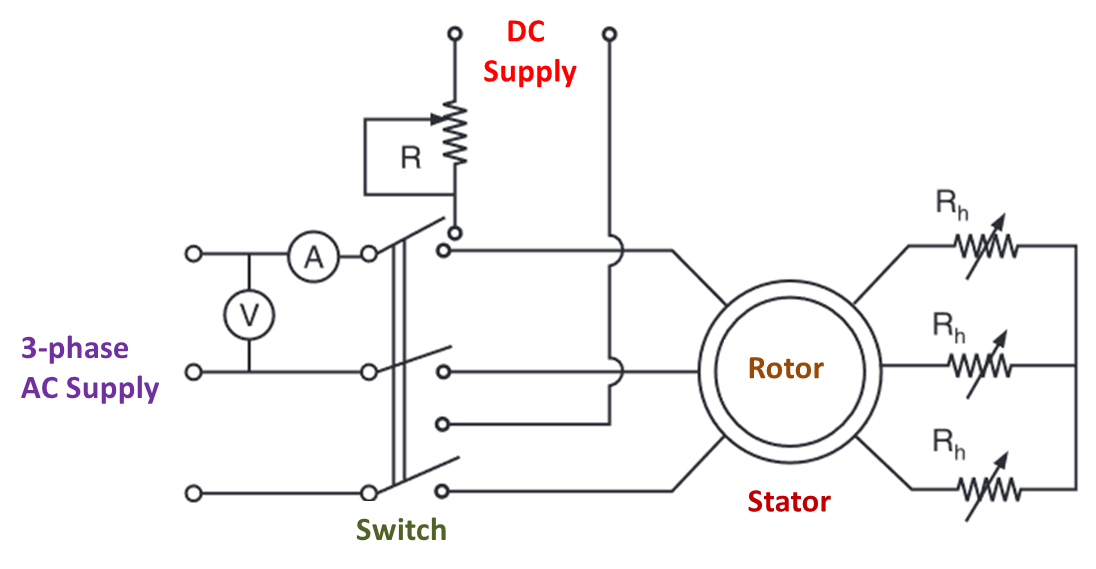Braking is the method of stopping the motor whenever it is needed. A three-phase induction motor can be braked by disconnecting the stator windings from the supply and feeding two stator phases with DC. A three phase slip-ring motor can also be braked by opening one supply lead to the motor and connecting a suitable resistance in the rotor circuit.
Methods of Induction Motor Braking
There are three types of electric braking:
- Regenerative Braking
- Dynamic or Rheostatic Braking
- Plugging or Reverse Current Braking
Regenerative Braking
In regenerative braking. the induction motor is made to run faster than its synchronous speed. The motor operates as a generator parallel to the source of supply and the generated energy is supplied to the source. Depending upon the speed, motoring or generating action of the machine will be automatic. This method of electric braking is applicable to squirrel cage induction motor.
Dynamic Braking
Dynamic braking is usually achieved by switching over its stator winding to a source of direct current and shunting the rotor winding with external resistance. The flow of direct current through stator winding sets up a stationary magnetic field in the air gap. Due to rotation of rotor in this field alternating current is induced in the rotor. This current sets up a magnetic field stationary with respect to stator. Due to interaction of resultant field and rotor current, the braking torque is developed. The circuit diagram with special switch is shown in Fig. 1.

Fig. 1: Induction Motor Dynamic braking
Plugging
The method of stopping a motor involves temporarily reversing the connections to reverse the motor torque. The motor is rapidly brought to rest but, unless the supply is switched off at that instant, the motor will then accelerate in reverse. The method is commonly used for rapidly reversing a motor, but for braking purposes relay is usually filled to switch off at the instant of reversal. A polyphase induction motor can be plugged by reversing the connections of two supply lines to the motor, the braking torque being controlled by resistors in the stator circuit, or in the rotor circuit of a slip-ring motor.